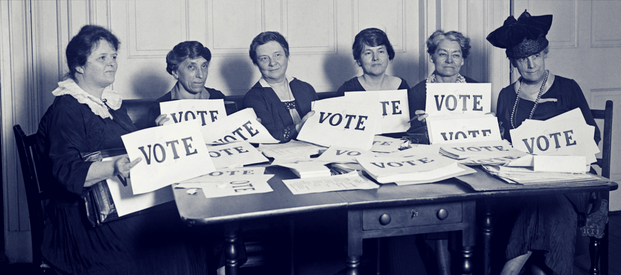2018 – 100 Years Since Women got the Vote
In 1918, after many years of campaigning, women finally got the right to vote. This year – one hundred years on – the anniversary is marked with exhibitions and events. On 10 June, women wearing the suffragette colours of green, white or purple, will create a flowing river of colour as they march in coordinated parades to make mass-participation artworks in Belfast, Cardiff, Edinburgh and London. Later this month, ‘Voice and Vote’, an interactive exhibition exploring the impact of women on Parliament over the last 200 years opens at the Houses of Parliament on 27 June.
Women’s suffrage movement
The campaign for the right to vote began as far back as the 1860s after a proposal for votes for women was rejected in Parliament by 194 votes to 73. Women formed local suffrage societies and the movement gained strength when, in 1897, the local groups banded together into a national society led by Millicent Fawcett. The women used peaceful tactics in order to prove themselves intelligent, law-abiding and responsible enough to participate in politics.
Frustrated by the slow and respectable tactics, Emmeline Pankhurst moved the campaign to a different level in 1903. With the motto ‘deeds, not words’, she set up a separate, more militant suffragette society. Women took part in demonstrations, smashed windows, committed arson and went on hunger strike to promote the cause. On Derby Day 1913, Emily Davison was trampled to death when she threw herself under King George V’s horse in protest against the government’s continued failure to grant women the right to vote. Support grew for women’s suffrage but Parliament continued to reject the demand for votes for women.
World War One
During the war suffragettes suspended their militant activities and took on many of the tasks left vacant by men who had gone to the front. Women’s huge contribution to the war effort helped win support for women’s suffrage, backed up by the pre-war campaigning which had raised the awareness of women’s abilities. Had it not been for the suffragist movement before the war, women may not have been allowed to take on their wartime roles.
Why 1918?
As the First World War progressed, it became clear that many men returning from the war would not be entitled to vote. At that time only those men who owned property were allowed to vote and many men who had spent several years away at war did not own a home. This meant that the right to vote was high on Parliament’s agenda.
In February 1918 the House of Commons passed the Representation of the People Act by a huge majority, giving men over the age of 21 the right to vote regardless of property ownership, and giving women the right to vote for the first time. However not all women were allowed to vote: only those who were over the age of 30 and were owners of property or married to property owners. The age difference was to ensure that women did not become the majority of voters, since so many men had died in the war.
First woman in Parliament
In December 1918, women voted in the general election for the first time and in the same election, Constance Markievicz, a Sinn Féin politician and a suffragette, was the first woman to be elected to the House of Commons although she did not take her seat. The following year, Nancy Astor was the first woman to sit in House of Commons. Many of the suffragettes were disappointed: Nancy Astor succeeded her husband as MP, was elected with his support, and had not been a suffragette. What’s more she was upper class and American! However in her time in Parliament she proved her support for the women’s cause by campaigning vigorously for equal suffrage rights and supporting other female MPs.
Equal rights to vote
It was not until ten years after the Representation of the People Act that – ninety years ago this year – all women got the vote. The Equal Franchise Act of 1928 gave the vote to women on the same terms as men and at last all adults over 21 could vote.
Sadly, just 18 days before this news was announced, Emmeline Pankhurst died on 14 June 1928.










